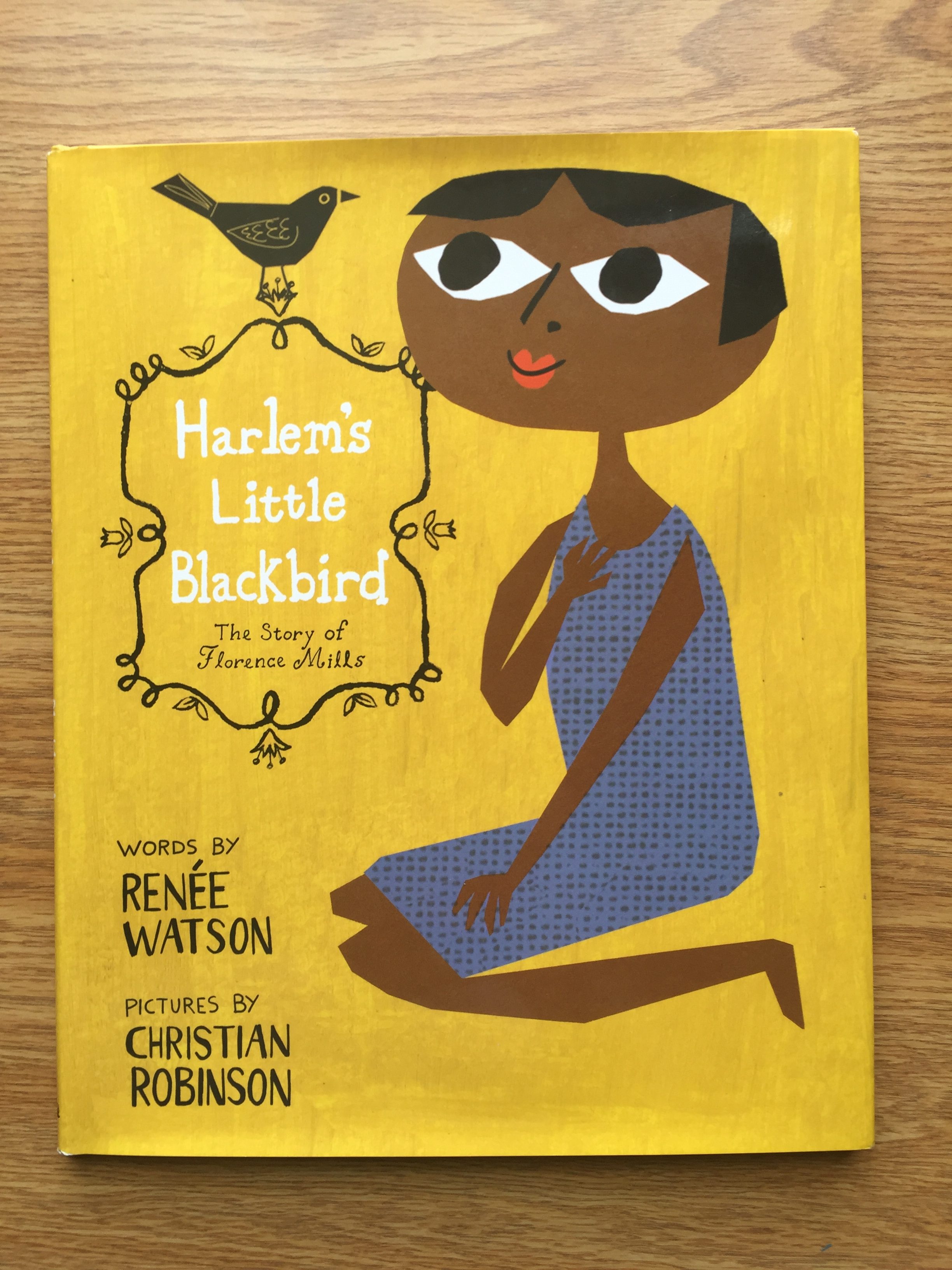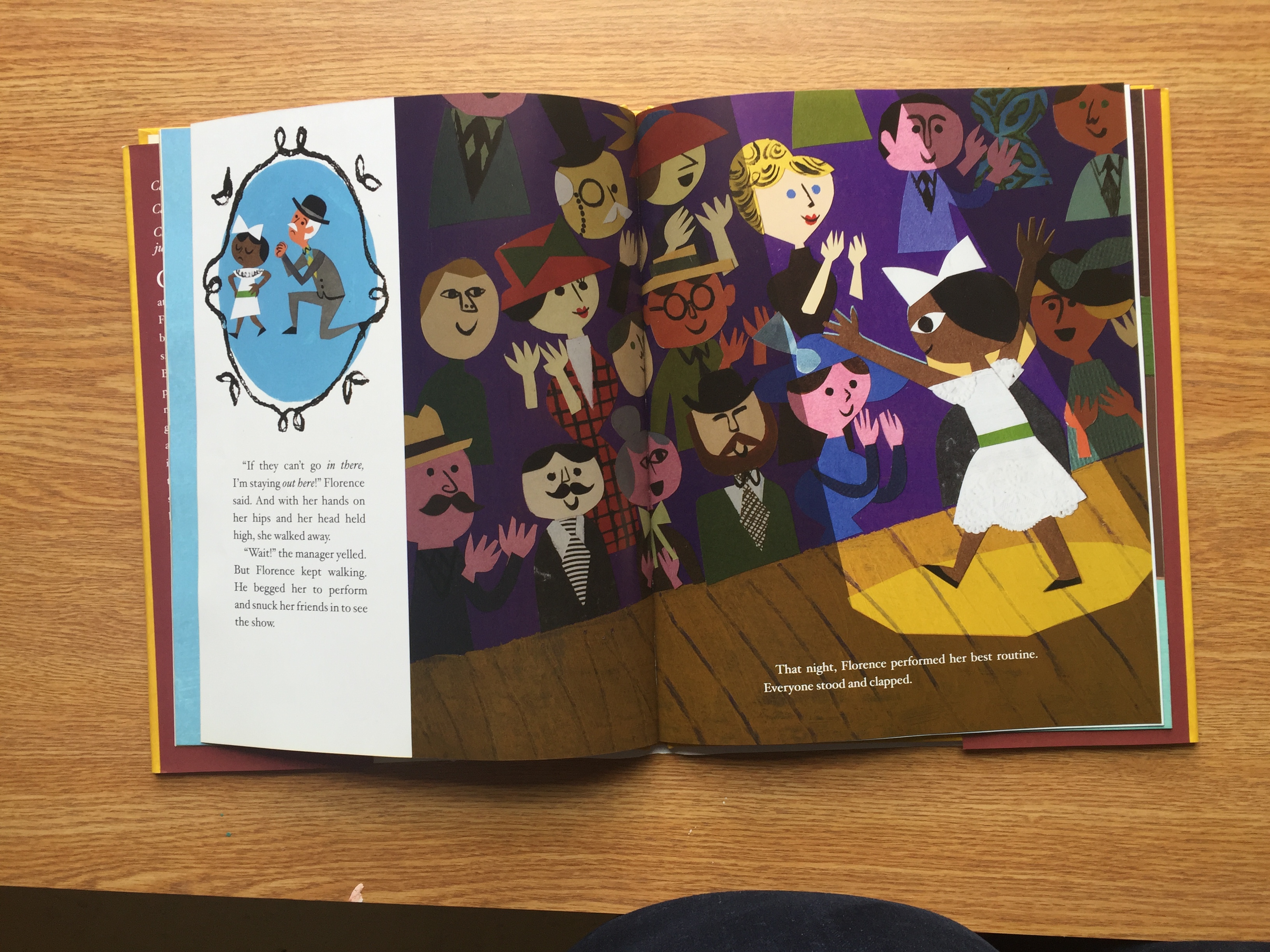
Author: Renée Watson
Illustrator: Christian Robinson
Publisher and Year: Random House 2012
Number of pages: 31
Genre: Picture Book
Analysis
Harlem’s Little Blackbird is the story of singer and performer Florence Mills and her success in a business where black people were not welcome. The story begins in Florence’s childhood home when it is storming. Her mother is singing and says it is the best way to block out the storm. Florence starts singing and when the storm passes she thinks “If my voice is powerful enough to stop the rain, what else can it do?” Florence continues to use her powerful voice and become well known for being a performer and challenging the racial segregation of the time. Florence is not always welcome where she is preforming, but it does not stop her from inspiring change in others through her powerful voice.

Harlem’s Little Blackbird is a beautiful story that combines illustrations and text to cultivate a unique experience. Twice in the story Florence says a phrase along the lines of “if my voice can do this, what else can it do.” Each time Florence says this it marks a change that is about to happen. The first time she says it she is before she starts singing and preforming for other children and then eventually adults. The second time she says it is before she decides to advocate for change in the way black people were treated in theatre. Each time she says this phrase, the phrase is done in a different font and surrounded by borders which further emphasizes the idea that everyone can make a change if you start small.

The ideologies of this story are very beneficial to a classroom. Harlem’s Little Blackbird does not shy away from the problems that Florence faced in her time as a performer. The book blatantly shows that the struggles Florence faced by being a black performer in a society that only valued white people. It depicts how Florence’s family was not allowed in to see her preform when she was a child and that she had to threaten not to preform to get them into the show. This reinforces the idea that at the time, and still today, a lot of media marginalizes a certain group for another group’s entertainment. Overall, this story is a great historical story to read with a class because of its engaging illustrations and important message.

